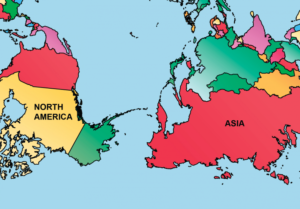
“If you want to understand the world, you need to understand Asia.”
— Nicholas D. Kristof, New York Times
Remembering Nobuko Patton

Former professor Nobuko Toda Patton, who taught Japanese at Berea College from 2009 to 2012, passed away on August 4, 2018 after a long illness. Read more about her life and work here.
In honor of Nobuko Patton’s many contributions to the study of Japanese language at Berea, a memorial fund has been established. Contributions to this fund will be used to continue and deepen her commitment to promoting Japanese studies at Berea.
Every dollar donated to the Fund will be matched by an anonymous patron. Memorial donations may be sent by check to:
The Nobuko Patton Memorial Scholarship Fund
Berea College
CPO 2216
101 Chestnut Street
Berea, KY 40404
Additionally, you may contribute to the scholarship fund below:
Upcoming Events
September 7, 2022 – Nathan Patton
“Japanese Taiko Drums: Past, Present, and Potential Future”
Woods-Penn Commons
6 p.m.
October 5, 2022 – Sarah Mattice (University of North Florida)
“Exploring the Heart Sūtra”
Room 308, Draper Building
6 p.m.
November 2, 2022 – Amrita Mishra
“Water-mamas and Mermaids: Oceanic Memory, Indian Indentured Labor, and the Caribbean Plantation”
Room 308, Draper Building
6 p.m.
February 1, 2023 – Jianfen Wang
“From the Rice Field to Tik Tok: A Rural Woman’s Transformation during China’s Post-Reform Era”
Room 308, Draper Building
6 p.m.
March 1, 2023 – Xiaolin Duan (North Carolina State University)
“An Object of Seduction: Chinese Silk in the Early Modern Trans-Pacific Trade, 1500–1700”
Room 308, Draper Building
6 p.m.
April 5, 2023 – Michael Litzau
“Japanese-American Identity and Art”
Room 308, Draper Building
6 p.m.
Although Berea College did not institute a formal academic program in Asian Studies until 1999, Berea’s connection with Asia has a long history. As early as 1914, Berea’s mandate to “assert the kinship of all people” led to our campus hosting the Chinese-American activist Ng Poon Chew, who spoke against the Chinese Exclusion Act during his visit here.
Francis S. Hutchins spent nearly twenty years in China prior to becoming Berea’s longest-serving president in 1939. “Anyone who has roamed from his home country will have noticed the constant intermingling of ideas, culture, and goods from one nation to another,” President Hutchins declared in his inaugural address. “Our curriculum must always be those cultural objects which will enable us to think, and understand the world in which we live.” When Americans of Japanese descent were confined to “War Relocation Camps” in 1942, President Hutchins authorized the admission of Japanese-American students and the recruitment of Japanese-American staff, even though the local community opposed their presence. Following China’s revolution in 1949, President Hutchins invited some of his former Chinese colleagues to join Berea’s faculty, where they opened students’ minds and hearts to Asia for decades to come.
Connections between Berea and Asia also have traveled from west to east. In 1963, the Korean-American writer Induk Pahk was inspired to establish a school that she called “Berea in Korea,” now known as Induk University, in Seoul, South Korea. Since 1988, Berea has participated in the sister region relationship between Madison County, Kentucky and the Yatsugatake region of Japan’s Yamanashi Prefecture, which brings Japanese visitors to Berea every spring and Bereans to Japan every autumn. President John B. Stephenson’s friendship with His Holiness the 14th Dalai Lama resulted in an agreement to bring Tibetan students to Berea, leading to the first Tibetan Berea graduates in 1995.
Today, Asian Studies graduates can be found running multimillion-dollar companies, practicing law, teaching English as a second language, pursuing academic careers, earning a living in the arts, and serving in non-profit agencies all over the world. Through the visionary leadership of Berea faculty, staff, and students, engagement with Asia has become an increasingly important way for Bereans to “assert the kinship of all people.”